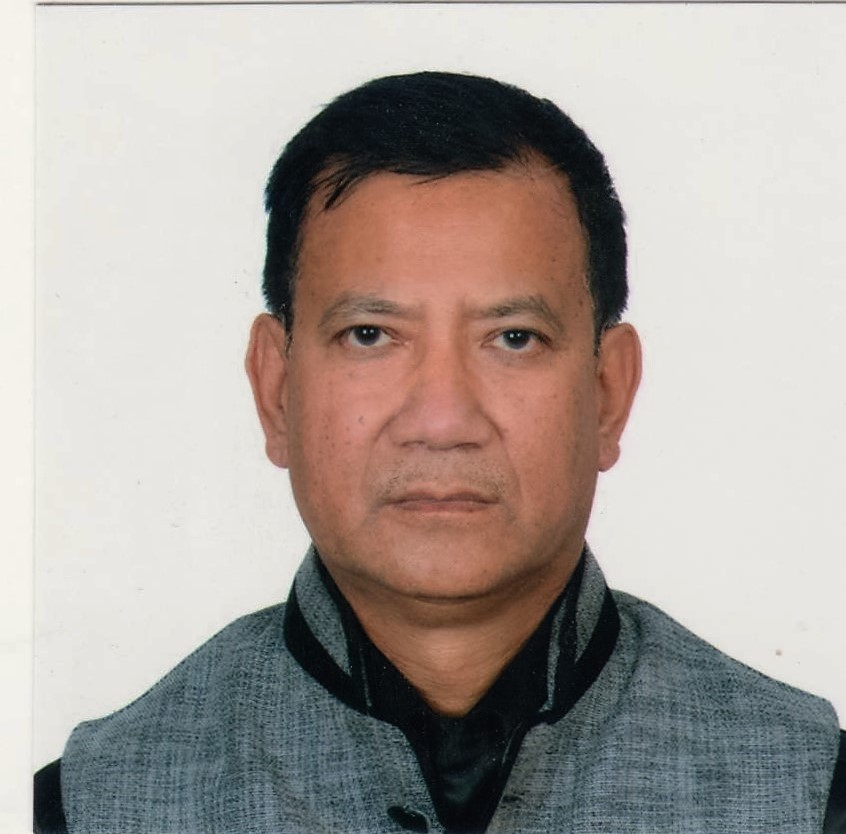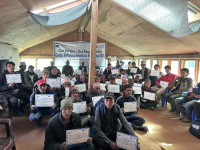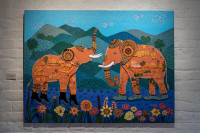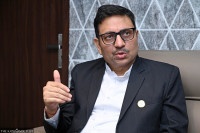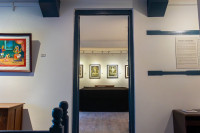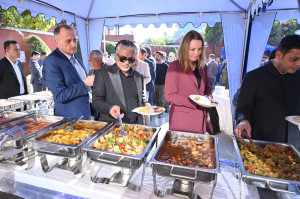Culture & Lifestyle
The forgotten aviator
That was my first encounter with Captain Hardy Furer. He served Nepali air transport for many years during a time when aviation infrastructure was at its initial phase. He loved Nepal very much.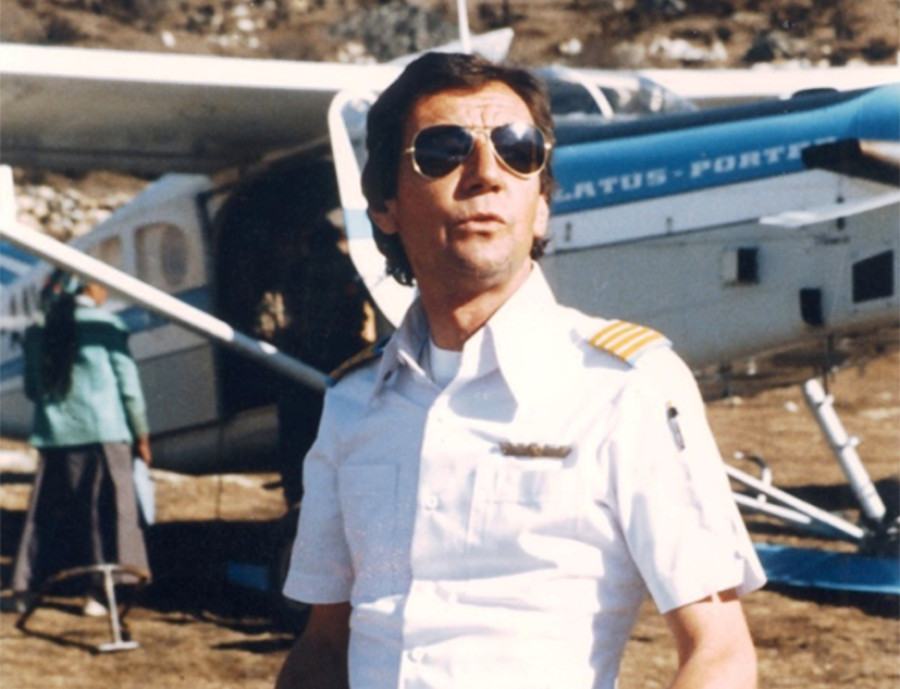
Tri Ratna Manandhar
Back in 1982, I was deputed to the Nepalgunj Airport as an Air Traffic Control officer for a short period. On completion of my deputation, I was all packed and ready to leave for Kathmandu, my hometown, but unfortunately, the weather was not favourable. It had been raining since the morning so the sky was overcast and the grassy runway of Khajurao, the old Nepalganj airport, was waterlogged. Disturbances in the ionosphere due to bad weather conditions had also led to ground-to-ground communications becoming impossible. Subsequently, all flights were cancelled and I was very disappointed.
Suddenly, an 9N AAW Pilatus Porter (PC 6) called the Nepalganj Tower. The flight was back from a remote airfield in Karnali. The aircraft was owned by UNDP Nepal, operated under the Air Transport Support Project. The project was established to support UN Projects in Nepal as well as for emergency activities. The waterlogged runway was not a problem for the Pilatus. After landing, the pilot informed that his next destination was Kathmandu.
I beamed with delight and quickly informed the pilot over VHF (controller/pilot communication) that my flight had been cancelled and if I could get a lift in his flight. Without any hesitation, the pilot agreed. I had not expected such a quick and positive response from a pilot I had never met before. I was so happy to have the opportunity to be home as planned and that too, free of cost.
On board the flight, I was in the front seat, to the right-hand side of Captain Hardy Furer. He gave me a headset and said, “Now, you are my copilot.” After we were airborne, Hardy offered me a glass of hot black coffee. I was experiencing a real cockpit environment, monitoring controller/pilot VHF communication. It was raining throughout the route and the aircraft was flying very low. Before I could even ask, Hardy offered an explanation—during rain, temperatures can go extremely low in high altitudes, so there might be a possibility of icing. As the aircraft had no de-icing equipment, he had to fly low.
That was my first encounter with Captain Hardy Furer. He served Nepali air transport for many years during a time when aviation infrastructure was at its initial phase. He loved Nepal very much.
I had heard an interesting story about Hardy. Once he was seriously sick in Kathmandu. He had to be taken to Bangkok for further treatment, but he was not ready to go. He pleaded with the people attending to him to not take him anywhere else because he didn’t want to die in any other country but Nepal.
Hardy, at times, appeared like a reckless person. But when it came to flying, he was a very disciplined pilot. He had completed 7,000 flying hours and 14,000 flying missions to the most difficult terrains of Nepal. There had been numerous medical evacuations and free-fall food drops in absolutely isolated areas at high altitudes under extremely difficult flying environment, very often in poor weather. He flew several hours a day but never had an accident. When UNDP’s project in Nepal terminated, he went back to his country, Switzerland. But he could not forget Nepal. Once Hardy had written to one of his Nepali friends expressing how much he loved Nepal. His words were, “I feel like a foreigner in my own homeland.”
After that brief meeting on the Pilatus, I had another memorable time with Capt Hardy in the year 1999. I was deputed to Pokhara Airport then and Hardy was there in the course of a project with one of the leading domestic operators of Nepal. By then, he had already retired from his UN job. During his stay in Pokhara, we used to meet almost every day. He enjoyed telling stories of his exciting flying experiences in the remote airfields of Nepal. Hardy was first involved in the Sunkoshi Project, and later in the UN service from 1966 to 1984.
Whenever a new project was established, to support project activities, they’d find at least 1,000 feet level ground, prepare it, mark it and then established a STOL (Short Take Off and Landing) airstrip. Some of those airstrips prepared for project activities were later developed to STOL airfields for commercial operations by Nepal Airlines. In 1971, on the Nepal Government’s request, Capt Hardy assisted the RNAC as an Instructor Pilot to prepare STOL pilots for Twin Otters as well as Pilatus Porter aircraft. He recalled training Nepali pilots as one of the most rewarding moments of his carrier. His flight included several missions in aerial photography, mapping and aerial survey, high altitude paradrops and transport of heavy equipment. A high altitude para-drop of a live goat in a crate as supply for a stranded mountaineering mission was his funniest experience.
Hardy contributed much to Nepal’s air transport service, especially in the remote part of the country. Yet today, it seems everyone has forgotten him and his services. In the course of writing something about Hardy as a tribute to his devotion, love and contribution to this country, I came in contact with one of my relatives Bhai Raja Manandhar, a former senior officer at the Swiss Embassy who has now retired after serving 24 years at the Embassy. Manandhar had a good relationship with Hardy’s younger brother, Anton Furer, and they are still in regular contact. Through them, I came to know many things previously unknown about Captain Hardy. I was surprised to learn that Hardy was also attached with the fine arts. He was very close to the family of the late Lain Singh Bangdel, a renowned artist and academic. Hardy was an abstract painter and wanted to organise his own painting exhibition, but could not do so because of financial constraints.
Manandhar had never met Hardy, but he had so much information about him. He was also involved in managing Hardy’s funeral on behalf of the Swiss Embassy. He had collected Hardy’s belongings from his home after he passed away. The belongings were later delivered to an embassy official. However, a wrist watch, a mini tape recorder and a box remained with him. He also provided me with a photo of a Swiss registered Pilatus Porter which Captain Hardy had landed in Tansen, Tundikhel carrying then Prime Minister Surya Bahadur Thapa.
Through Manandhar, I learned that Hardy had spent a few months at Shaligram Apartments, then a club in Sanepa whose owner and son were both pilots. He had good relations with many VIPs during his tenure in the UN. Lisa Choegyal, honorary consular of New Zealand for Nepal, and Madhukar Sumsher Rana were known to be among Hardy’s close friends. As Hardy was also a good photographer, he was known to Prajwal Krishna of Photo Service, Kathmandu. Manandhar said that Hardy’s death in the absence of his close friends and loved ones was very unfortunate. Though Hardy was very cooperative and helped many in his heydays, it was disappointing to learn that no one had supported him during his bad days. But such is life.
Captain Hardy died on October 17, 2005 in Kathmandu. So it is clear that he died in Nepal. His wish was fulfilled. The sad part is that no one was with him during his last days. May his soul rest in peace.
Manandhar is a former director-general of the Civil Aviation Authority of Nepal (CAAN)




 7.12°C Kathmandu
7.12°C Kathmandu